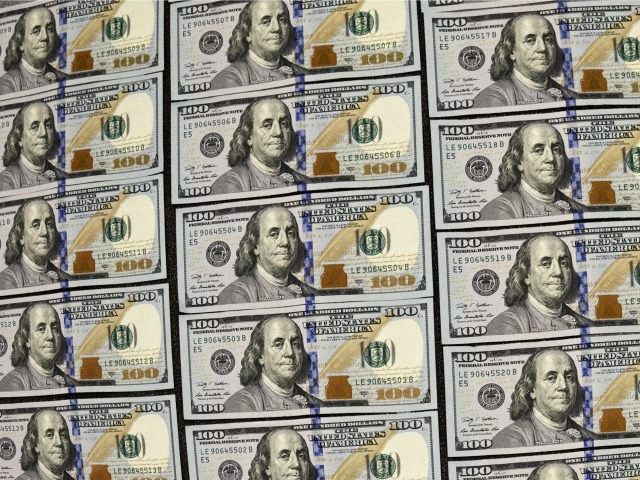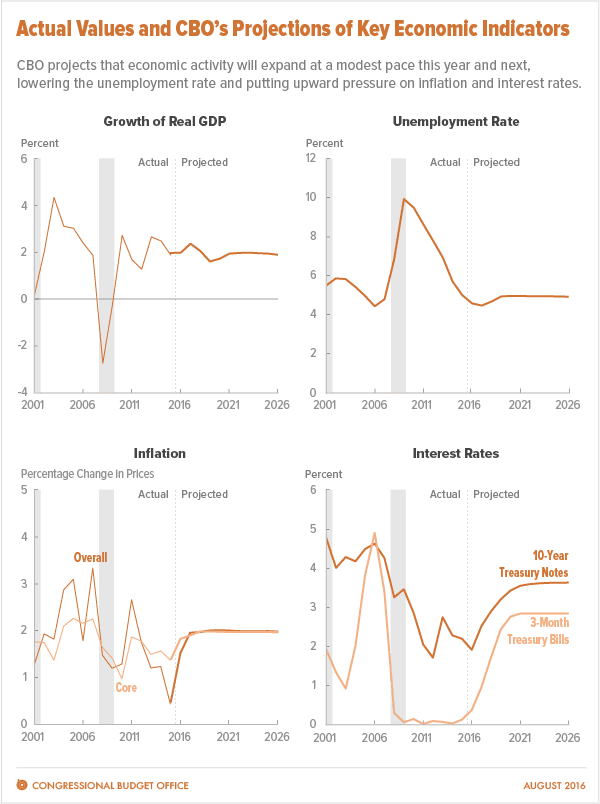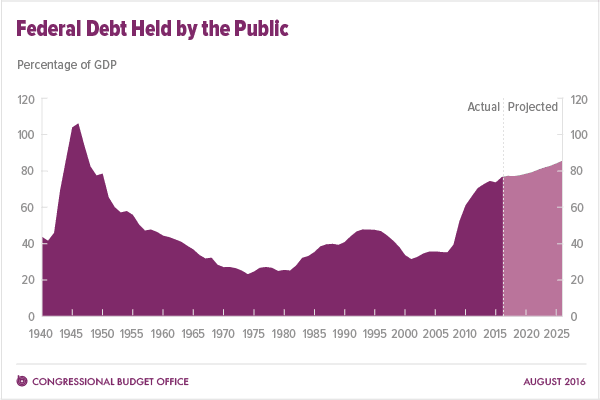The federal government will fund its 2016 spending promises by borrowing another $590 billion — one-third more than its $450 billion deficit last year — further raising the national debt, according to a new report by the Congressional Budget Office.
“Our national debt is projected to increase from $19 trillion [$19,000 billion] to almost $30 trillion [$30,000 billion] by the end of the decade, and our current debt already exceeds our nation’s GDP,” Sen. David Perdue (R.-Ga.) said in response to the deficit report.
‘GDP,’ or Gross Domestic Product, is the value of all work performed in the United States during the year. It will likely reach $18,400 billion in 2016.
“Reading these CBO economic outlook reports remind me of the movie ‘Groundhog Day’ … Each new report paints the same alarming picture for our fiscal future, yet nothing in Washington changes,” said Perdue, who sits on the upper chamber’s Budget Committee.
“The latest CBO report underscores why we must continue finding serious solutions to solve our national debt crisis,” said Perdue, a former CEO who made his fortune by turning around failing businesses.
The CBO report shows how the annual budget deficit is growing faster than the economy for the first time since 2009 and how this trend spells trouble for the economy.
The report said the U.S. economy, or Gross Domestic Product, will grow slower than it predicted in January.
The growth in GDP that CBO now projects is slower throughout the 2016–2026 period than the agency projected in January. Weaker-than-expected economic growth indicated by data released since January, recent developments in the global economy, and a reexamination of projected productivity growth contributed to that downward revision.
Current spending plans set by the GOP-led Congress by by President Barack Obama will explode the nation’s debt in long term, the CBO reported.
Debt held by the public rises from 77 percent of GDP ($14 trillion) at the end of 2016 to 86 percent of GDP ($23 trillion) by 2026 … Three decades from now, for instance, debt held by the public is projected to be about twice as high, relative to GDP, as it is this year—which would be higher than the United States has ever recorded.
In August, CBO reported to Congress that there will be no automatic cuts in spending in the near future because House and Senate Republicans agreed to Obama’s demand that they lift the spending caps imposed by the Budget Control Act of 2011. Republicans suspended the federal debt ceiling to avoid another confrontation with the president.
Robert Bixby, the executive director of the Concord Coalition, which advocates for less government debt and for balanced budgets, said the CBO report was a wake-up call for the voters.
“Voters are hearing a lot of expensive new proposals from candidates but not so much about how to keep the nation’s debt from growing on an unsustainable path,” he said. “Today’s CBO report, which projects a rising debt burden over the next 10 years and beyond, shows why voters should expect candidates to offer credible policies to put us on a better course,” he said.
Perdue said the real problem with the stagnation is that the economy never gets better and the debt continues. “We need to reverse the decline in business investment and increase economic productivity,” he said. “This can be done and in fact, it must be done or our children and grandchildren will be the ones carrying the burden in the future.”



COMMENTS
Please let us know if you're having issues with commenting.